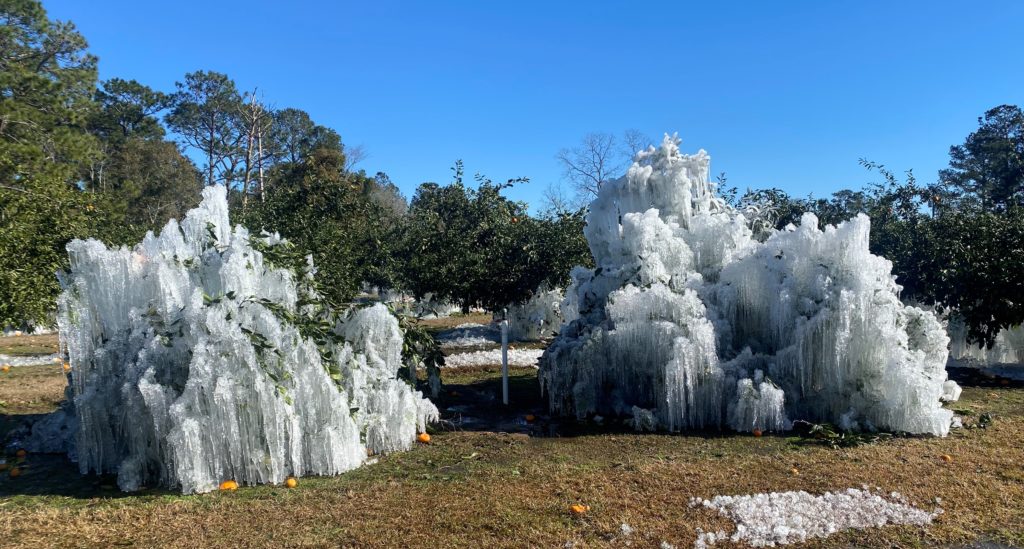Temperatures in the teens walloped the South Georgia-North Florida citrus region over the Christmas weekend, destroying fruit still on trees and damaging trees to some extent.

“We got as low as 15, but most places it hovered around 18 degrees,” reported Lindy Savelle, president of the Georgia Citrus Association. “All fruit left on trees appears to have turned to mush and is no good. Foliage damage is significant, but we won’t know the true extent of the damage here for quite some time.”
Savelle said South Georgia growers used tree covers, tree wraps, bedded pine straw, microsprinklers, bonfires “and any method we could think of to help trees survive.”
North Florida had lows of 19 the mornings of Dec. 24 and Dec. 25, and a low of 22 on Dec. 26, reported Kim Jones of Florida Georgia Citrus. “We harvested all our crop last week, so no fruit damage,” said Jones, who is president of the Cold Hardy Citrus Association. “It’s too early to tell how much tree damage. But it looks like there will definitely be some. I think within 10 days we will see just how much damage is done.”
Texas and more traditional citrus-growing regions farther south in Florida apparently fared well.
Texas Citrus Mutual President Dale Murden said the lowest temperature he’d heard reported was 27 in the Harlingen area, and that temperatures there were below 28 for only four hours. “Oddly, the eastern side of the RGV (Rio Grande Valley) was colder than the western end where most of the acreage is now,” he said. “Obviously we will be evaluating any damage this week, but all in all citrus-wise, so far so good.” Most Texas citrus is grown in the lower Rio Grande Valley.
Florida Citrus Mutual Communications Consultant Tamara Wood said in most Florida citrus-growing regions, “It appears that we were right on the edge of what could have been a devastating event. But it seems that the consistent cloud cover provided significant help in protecting the trees.” Cloud cover holds in warmth generated during the day prior to a freeze.
“There are sure to be some cold pockets that sustained damage. But overall, we appear to be very fortunate,” Wood said.
ABOUT THE AUTHOR

Ernie Neff
Senior Correspondent at Large









